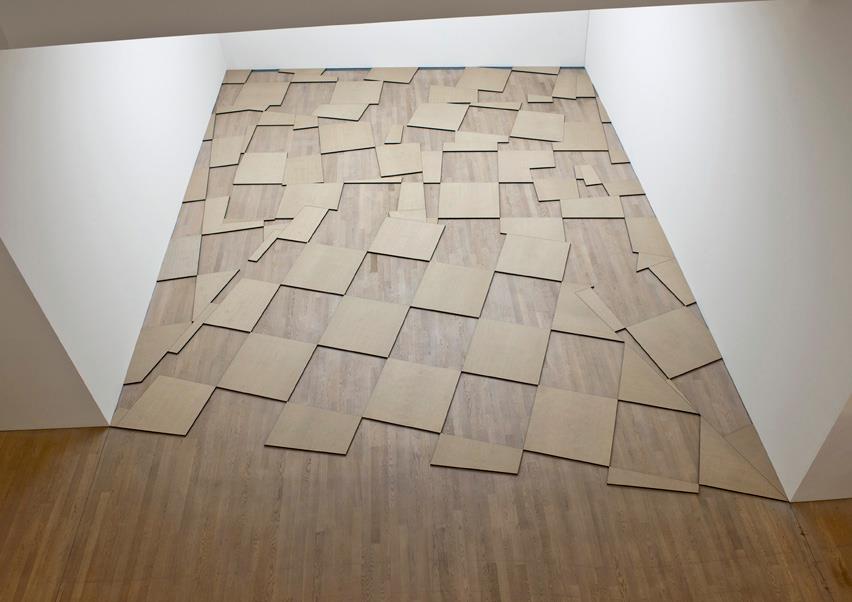
TIM STAPEL
Parcours

Parcours
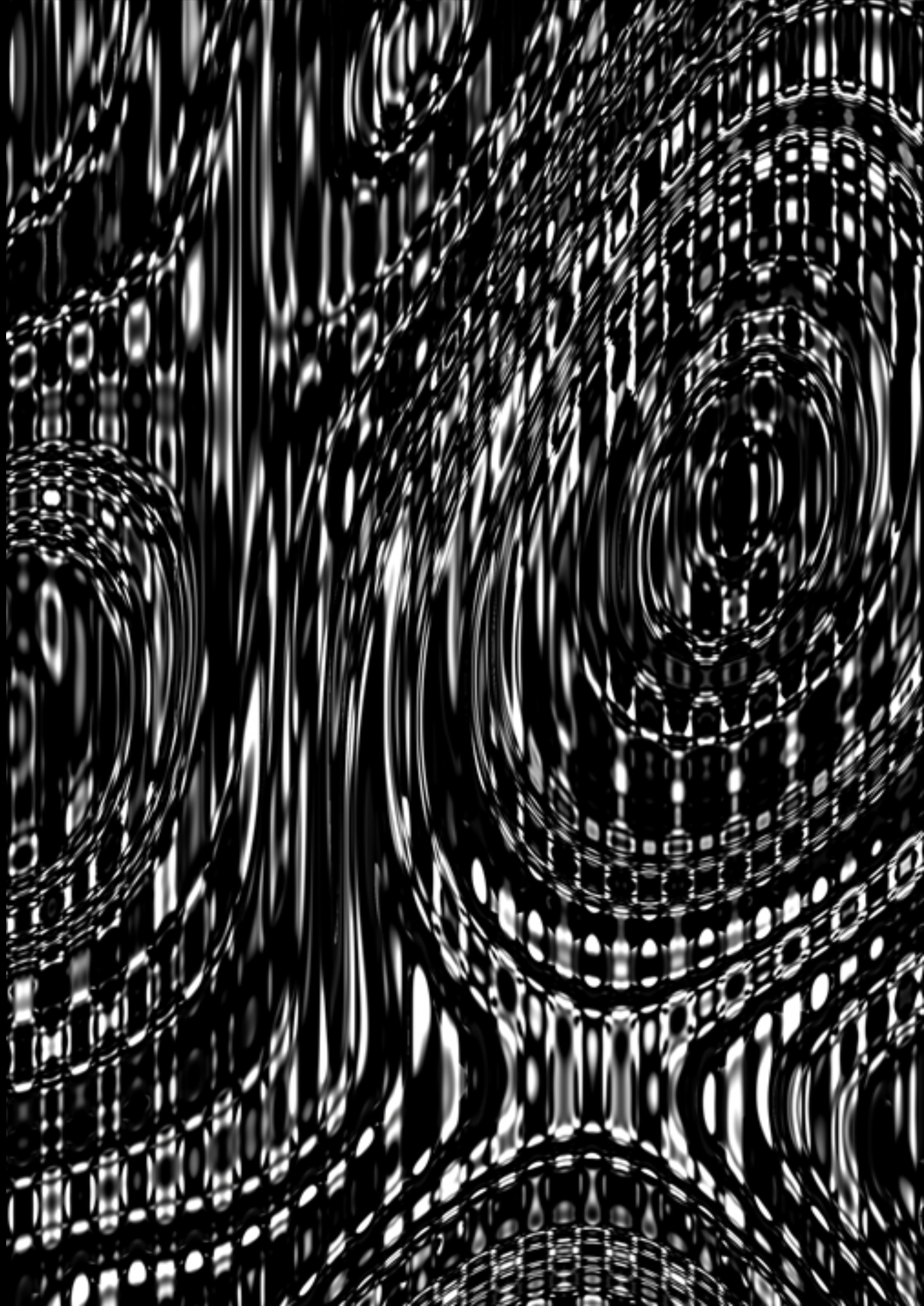
Arash Akbari
FILE São Paulo 2025 | LED Show
Festival Internacional de Linguagem Eletrônica
Gelîm – França
Gelîm é uma obra processual inspirada nos padrões repetitivos frequentemente encontrados em tapetes tradicionais, especialmente do Oriente Médio. A obra utiliza a função de ruído Simplex em 4D e fórmulas matemáticas para gerar padrões em constante evolução.
BIO
Arash Akbari é um artista transdisciplinar de Teerã, Irã. Sua pesquisa investiga a relação entre sistemas artísticos dinâmicos, percepção humana, narrativa não linear e a convergência entre os mundos físico e digital. Seu trabalho abrange os campos de sistemas generativos, design de interação, tecnologias imersivas e processamento em tempo real.

Toki Ori Ori Nasu – Falling Records
In this work, open reel tape recorders are placed on top of high pedestals and, as they play back, the magnetic tape unspools down into plastic receptacle below. The tape that accumulates in the container piles up as time passes, weaving an unusual pattern in the space. When the tape stops accumulating it is wound back up at high speed to a symphonic soundtrack. The pattern that had existed until then is extinguished and a new pattern is then woven.

Sound Sphere
An installation consisting of cassette tape wound around a spherical object and a device to play its sound. There is no beginning or end to the tape; rather, a small motor randomly moves the sphere as it sits atop the player, producing noise. The work varies in scale from installation to installation. Varying sizes of globes are covered with a length of time that is proportional to their surface area. When linear time is wound around a sphere, it is deprived of the relationship between place and time, and thus also loses its meaning (or in other words, causes meaning to arise).

Contornos
O laboratório criativo baseado em Londres Bare Conductive foi convidado a se juntar aos designers Fabio Antinori e Alicja Pytlewska para desenvolver uma metáfora em grande escala para a ideia de dar vida a uma coleção de peles têxteis responsivas. ‘Contours’ está no centro da instalação de tapeçaria interativa; uma série de sensores capacitivos são aplicados aos substratos de tecido suspensos usando tinta condutora. Esses sensores reagem à presença de uma pessoa nas proximidades e rastreiam seus movimentos, emitindo uma paisagem sonora ambiente constantemente modulada que lembra os ambientes de pesquisa médica. A ornamentação geométrica abstrata conecta os sensores individuais das tapeçarias para formar painéis gigantes, servindo como um loop de feedback acústico que alude à relação entre a ciência e o corpo.
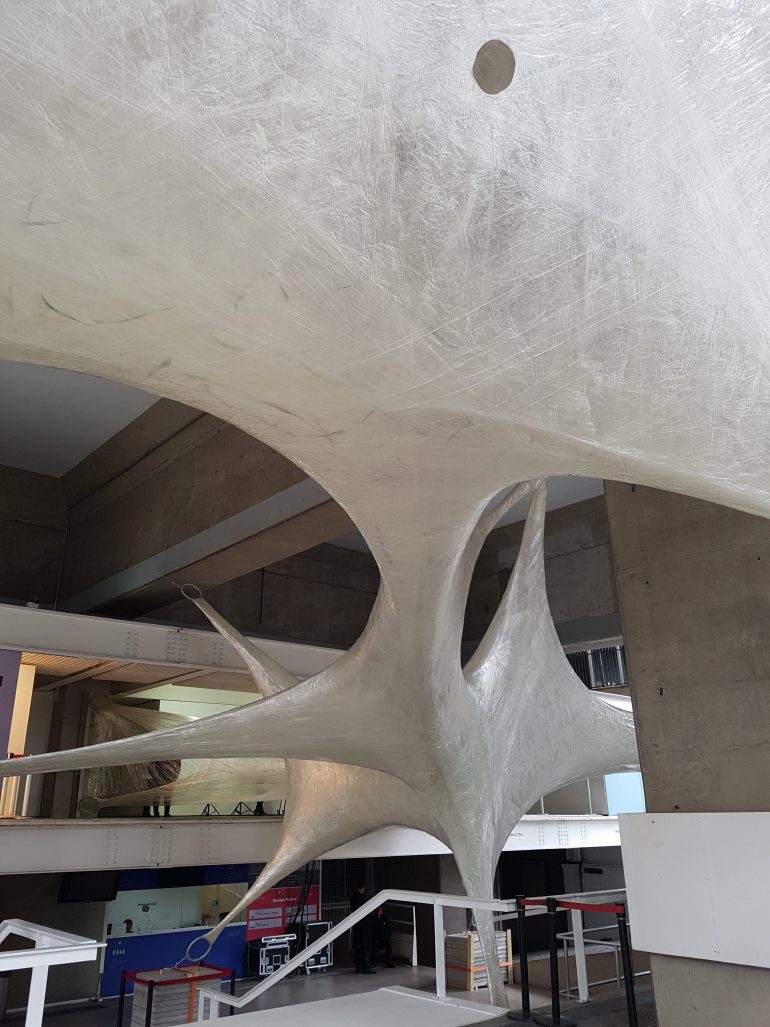
tape sao paulo
file sao paulo 2016
Constant wrapping of pillars with a transparent adhesive tape results in a complex, amorphous surface through the process reminiscent of growing of organic forms. One line evolves into surface that forms an organic shape of extraordinary strength. The entrance of the audience inside the volume transforms the sculpture into architecture. It was practically “found” through the act of chaotic wrapping, where a one-dimensional line (“tape”) slowly turned into two-dimensional plane, which then finally curved into volume.

Satellite Daylight
Satellite Daylight is an interactive light installation formed by a trapeze of 24 high-voltage neon tubes tapering upwards, created by fabric | ch – a studio for architecture, interaction and research dedicated to investigating contemporary space based in Lausanne. The installation is connected to data collected in real time from online weather stations and meteorological satellite maps, which therefore translate actual global light conditions picked up by satellites orbiting the earth at the latitude of Basel into an endless loop of perceivable electrical intensity.

鳥光桃代
Miyata Jiro
“Miyata Jiro” by Momoyo Torimitsu is a life size replica of the typical Japanese businessman. Sporting a suit, glasses, and a receding hair line complete with a comb-over, Miyata has mechanically crawled the metropolises of New York, London, Amsterdam, Paris, Rio de Janeiro, and Sydney. With the aid of the artist in full nurse costume, the duo engages street and business life (Miyata has crawled the likes of Wall Street and La Defense — epicenters of business cultures as well as typical touristic destinations). The performance and audience reactions were videotaped and photographed and six monitors at the Dikeou Collection play the respective videos, each identified by a small flag for the country in which the crawl took place.
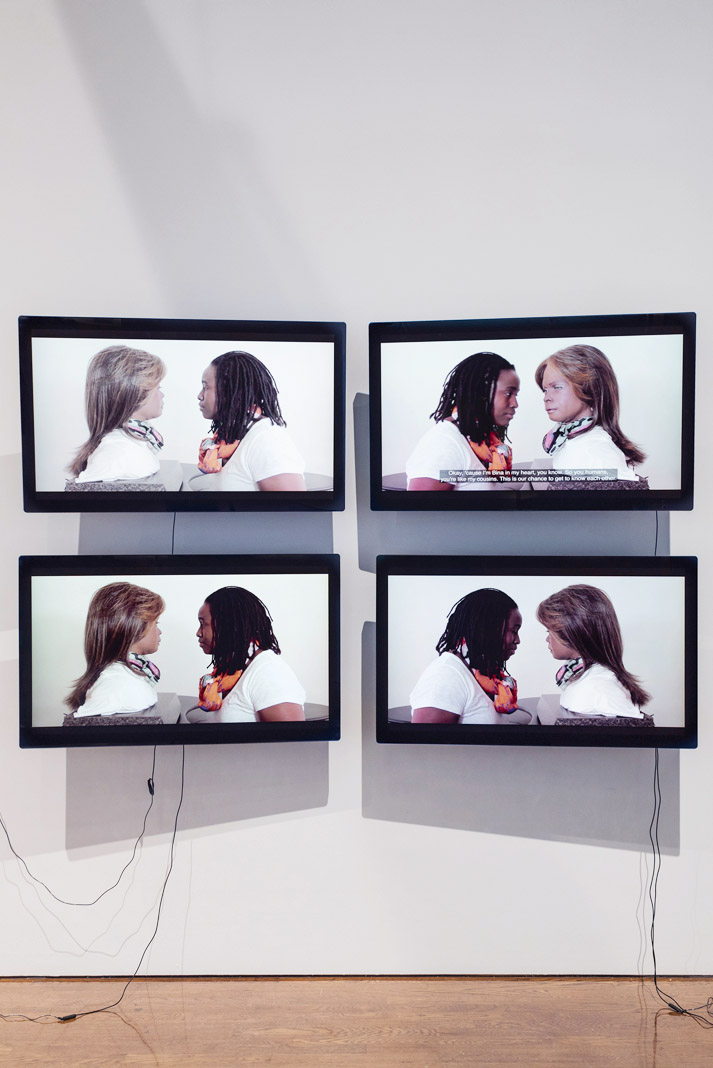
Conversations with Bina 48
Artist Stephanie Dinkins and Bina48, one of the worlds most advanced social robots, test this question through a series of ongoing videotaped conversations. This art project explores the possibility of a longterm relationship between a person and an autonomous robot that is based on emotional interaction and potentially reveals important aspects of human-robot interaction and the human condition. The relationship is being built with Bina48 (Breakthrough Intelligence via Neural Architecture, 48 exaflops per second) an intelligent computer built by Terasem Movement Foundation that is said to be capable of independent thought and emotion.

Ghost Pole Propagator II
Ghost Pole Propagator captures and replays the ‘skeletons‘ of passersby in its environment, creating a layered and dynamic tapestry that reflects the history and activity of a locale. Presenting a universal communication of presence, attitude and gesture, the stick-figures this artwork generates are compact and expressive means of representing the human form. The format of the work is variable; in some presentations, the project serves as a kind of ‘interpretive monitoring station’ for nearby pedestrian traffic.

Samplingplong
File Festival
Randomly selected, acoustically usable finds (electronic junk, relays, plastic toys,compressed air valves, pneumatically operated components) are combined with cables and tubes. Via a device controlled by computer, they are turned into interactive instruments. An improvised ensemble evolves, from which – per mouse-over and mouse-click -short miniature compositions of dense rhythmic clicks, hisses, whirs, hums and crackles can be elicited. A tapestry of sound bursts forth from the floral-like web of cables and tubes. The installation can be used by the projected mouse-cursor: rolling over the improvised instruments causes small sound events. Activating the installation by rolling over its parts enables the user to play spontaneous improvisations. Clicking these objects starts short programs of loop-like compositions. Small “techno-compositions en miniature”, rhythmic patterns of analog (or real) sounds; a physical low-tech simulation of electronic, digital music, perhaps an ironic comment on interactivity.

INTERIOR N0. 58
Primarily working within abandoned office spaces, her process involves stripping the rooms down to their individual components, laying bare the layers found beneath the surfaces. She then re-assembles the room using materials found on-site, such as fluorescent tubes, paper towels, laminate, and tape, by adapting techniques of sculpture, painting and drawing.
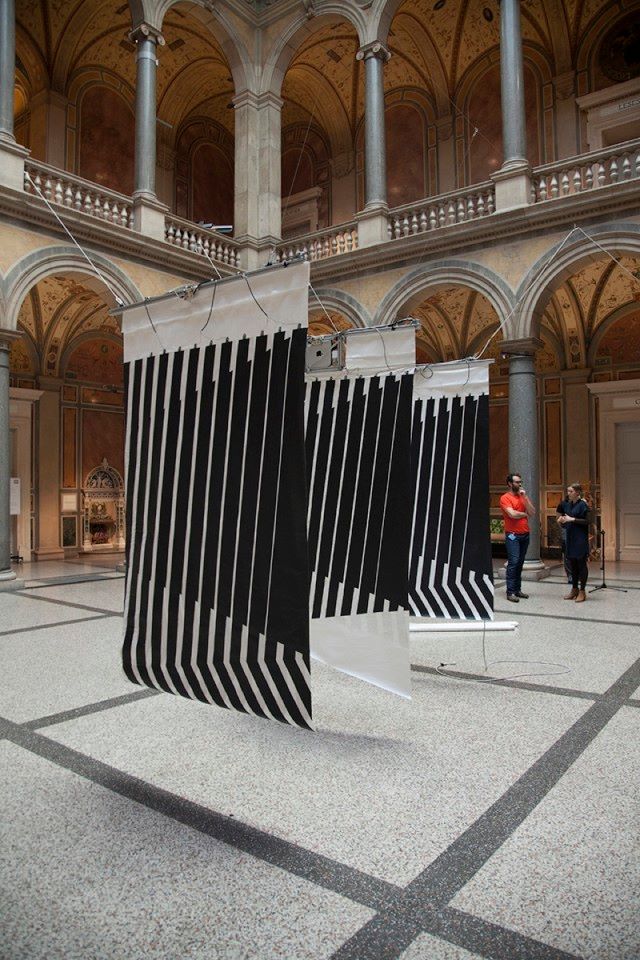
Contours
London-based creative laboratory Bare Conductive was invited to team up with designers Fabio Antinori and Alicja Pytlewska in order to develop a large-scale metaphor for the idea of breathing life into a collection of responsive textile skins. ‘Contours’ is at the core of the interactive tapestry installation; a series capacitive sensors are applied to the suspended fabric substrates using conductive paint. These sensors react to the presence of a person within the vicinity and track their movements, outputting a constantly modulated ambient soundscape reminiscent of medical research environments. The abstract geometric ornamentation connects the tapestries’ individual sensors to form giant panels, serving as an acoustic feedback loop that alludes to the relationship between science and the body.

Bowed Piano
Few chamber groups deploy their musicians as oddly as the Bowed Piano Ensemble. The 10 players, students led by the composer Stephen Scott, stand around, and sometimes under, a concert grand, armed with items of all kinds — nylon fishing line, piano hammers, guitar picks, strips of paper, rolls of plumber’s tape — and reach into the instrument to draw sounds from its strings.
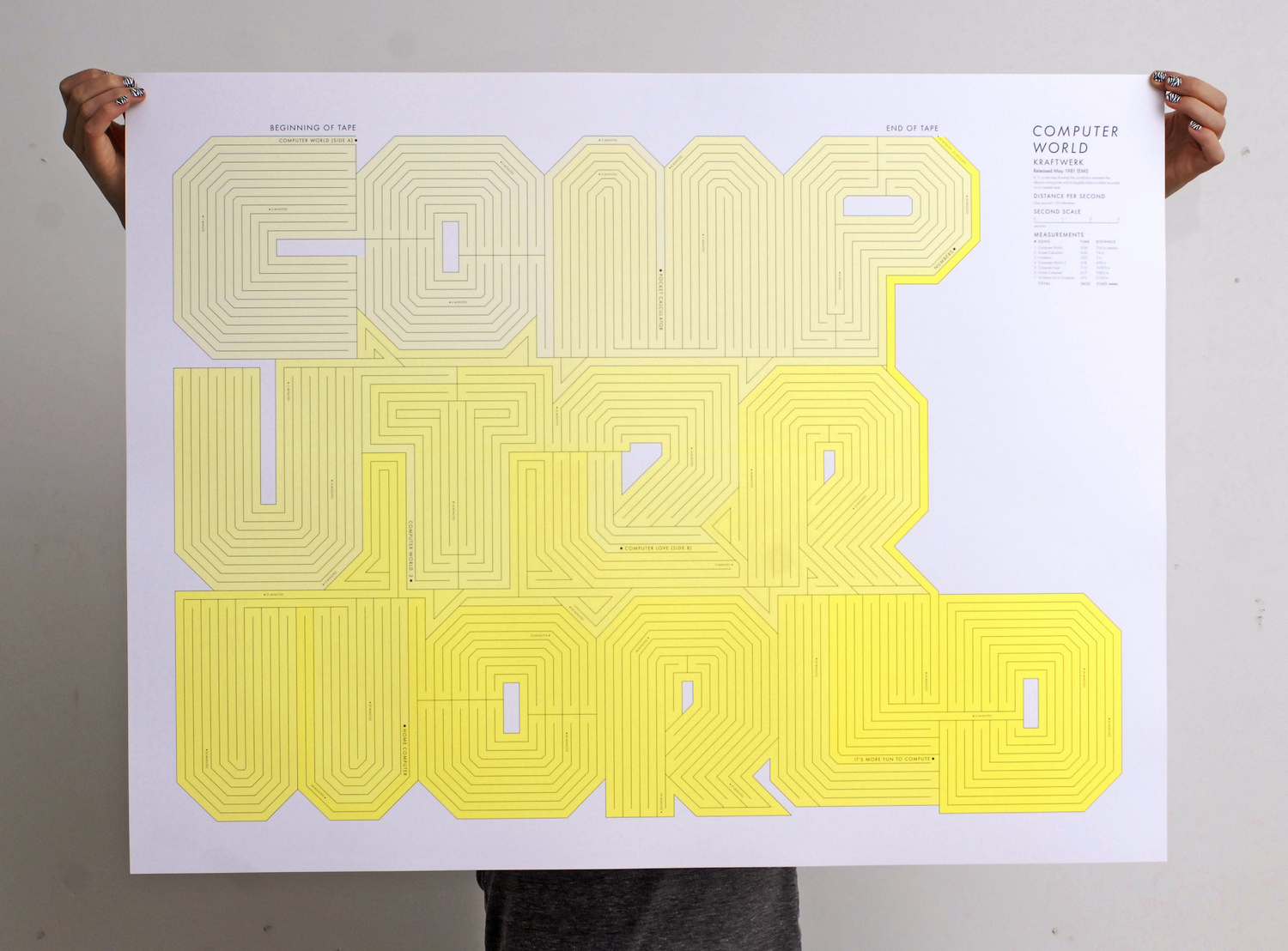
measuring kraftwerk
computer world
This album seemed an appropriate way to represent the lost feeling of excitement of the cassette tape as a new technology
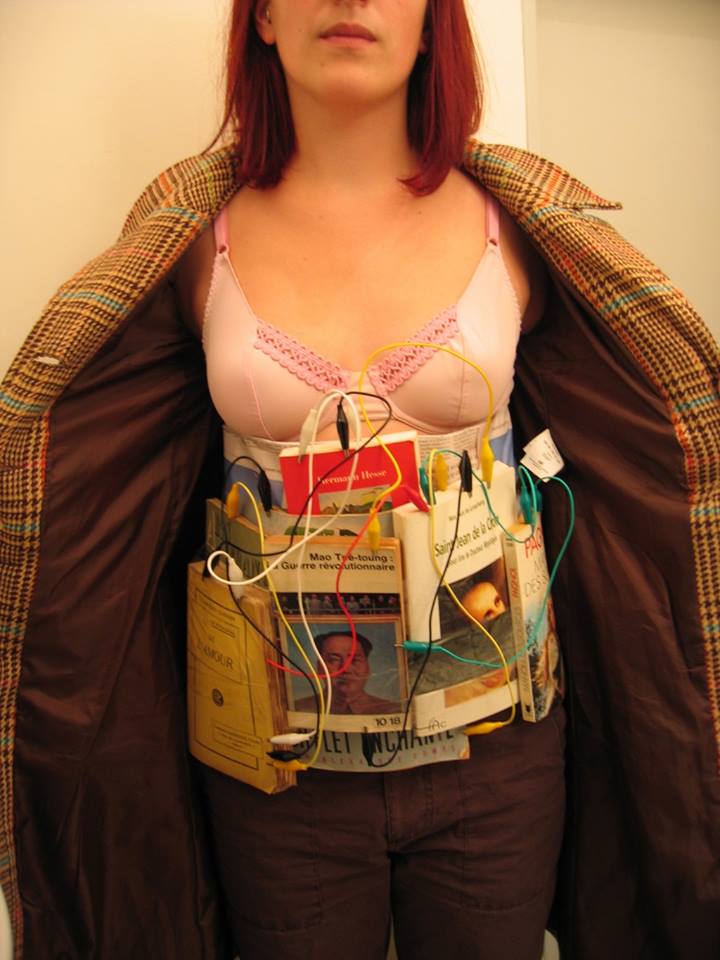
منير فاطمي
Evolution or Death
Fatmi inverts spectacular representations of identity by rendering them mundane and within reach of a subject that may scramble any conclusive narrative. Fatmi’s work counters strategies of interpellation that identifies a subject with an ideology prior to that subject’s ability to place their identity in or beyond a particular ideology. Fatmi parodies the various interpellations of colonialism and capitalism that seek to define others according to symbolic narratives. In Evolution or Death, 2004, (fig. 4) two Anglo-European looking subjects imitate suicide bombers with books and papers taped around their abdomens. One holds open a trenchcoat and another holds up a book that looks like a detonator attached to wires. Fatmi reverses the situation. These are not the suicide-bombers from Arab and Muslim countries. Instead, they appear to be of European descent in a European street or modern room in casual clothing.

לזכות ונדרס
ヴェンダースに勝つ
벤더스 승리
ВЫИГРАТЬ ВЕНДЕРС
Wings of Desire
cinema
Wings of Desire is one of cinema’s loveliest city symphonies. Bruno Ganz is Damiel, an angel perched atop buildings high over Berlin who can hear the thoughts—fears, hopes, dreams—of all the people living below. But when he falls in love with a beautiful trapeze artist, he is willing to give up his immortality and come back to earth to be with her. Made not long before the fall of the Berlin wall, this stunning tapestry of sounds and images, shot in black and white and color by the legendary Henri Alekan, is movie poetry. And it forever made the name Wim Wenders synonymous with film art.

Acquiesce
Genesis Belanger twists and stretches familiar objects into surreal scenarios with her stoneware, porcelain, and concrete sculptures. The Brooklyn-based artist frequently depicts detached limbs, misplaced teeth, and unusually located food in her work. One sculpture shows a mustard-topped hot dog disappearing into a handbag with a mouth-like zipper; another series dispenses rocks from dysfunctional quarter candy machines. This spring, a stoneware desk topped with flaccid pens, a tape-like tongue dispenser, and a drawer full of coping mechanisms was on view in the New Museum’s store window gallery.

Train Performance
Recently, I have found that traveling has made my anxiety peak. I suddenly feel trapped on a train, or in a car, and start being unable to breath. In order to both face this fear as well as do a performative piece about it, I taped myself up on a train. This is putting in to a literal sense the emotions I feel when traveling.

골란 레빈
ГОЛАН ЛЕВИН
Eyecode
Eyecode (Golan Levin, 2007) is an interactive installation whose display is wholly constructed from its own history of being viewed. By means of a hidden camera, the system records and replays brief video clips of its viewers’ eyes. Each clip is articulated by the duration between two of the viewer’s blinks. The unnerving result is a typographic tapestry of recursive observation.

Rek
With ‘Rek’ (stretch in Dutch) I explore the aesthetic possibilities of the human skin through a mixture of image capturing techniques. By manipulating this curious stretchable material with various low budget materials like nylon fishing rope and cello tape I am able to temporarily shape it into surprising textures and shapes. Highlighting not only it’s flexibility and adaptability but also it’s function as our own biological upholstery that aside from it’s protective capabilities could also serve as a medium for aesthetic expression, possibly in the form of a dress less fashion.

برونو مترا وجينسون لورانس
Бруно Метра и Лоренс Джинсон
Talented French duo of photographers Bruno Metra and Laurence Jeanson experiments with our visual perception. Using sticky tape, cuts from fashion magazines and human portraits they create a new form of facial expressions. After watching few works in a row your mind starts working as usual and you easily adopt the new transformed face as it is.

塩保朋子
waterfall
From a distance, Tomoko Shioyasu’s giant art pieces could be confused for immense maps of weather patterns rather than intricately cut paper tapestries. In fact, the Japanese artist is heavily influenced and inspired by the elements of nature such as the force of wind or the patterns of cells so it’s no wonder that his work has such an organic look and feel. Using utility knives, soldering irons, charcoal, and a steady hand, she creates floor to ceiling paper tapestries with the forces of nature in mind.

Tower no5 vhs tapes
It’s not hard to recognize that technology trends come and go, but what happens to all of those out of date products that the world no longer uses? Unfortunately a lot of the merchandise takes up landfill space, but there are a select few that step up to the recycling plate with ideas to repurpose the old products. Lorenzo Durantini’s creative vision for the large plastic rectangle VHS units we were all once googley eyed over, has taken to recreating them into powerful art sculptures.
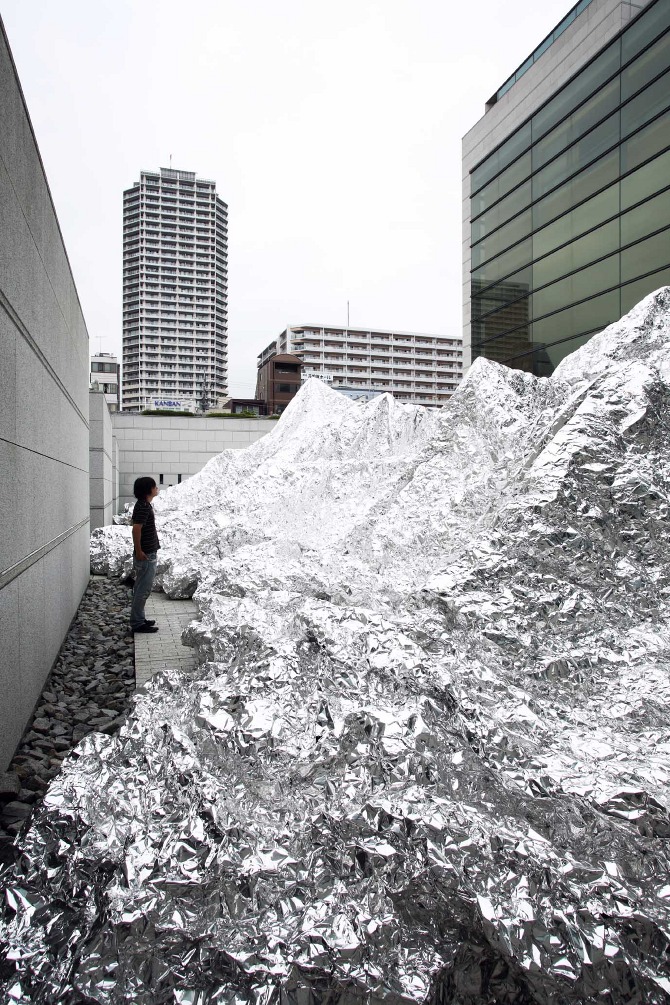
Aluminum Landscape
The silver landscape was constructed out of aluminum foil rolls and scotch tape with help from some of the office’s employees. Transforming a two dimensional material into a three dimensional structure is surprising and fun, as aluminum is very malleable. Beautiful yet strange during the day and mysterious by night, Kimihiko Okada’s towering foil mountains have probably already been re-purposed into something new.
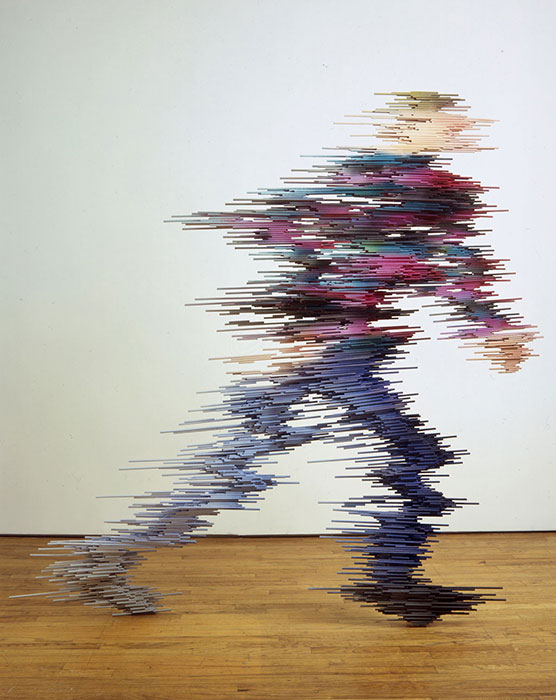
Райана Джонсона
pedestrian
Ryan Johnson’s pieces made from found and repurposed materials are very much rooted in traditional figurative sculpture, but he has abstracted the forms, making his work have a weird gestural quality. The drawing and writing he does on the casting tape he uses plays on the idea that it’s usually wrapped around broken limbs, but it also allows him to use it to create another thread of communication within his work. His ‘Pedestrian’ series of figures made out of wood and paint is also really stunning – they look like people zapping between dimensions.
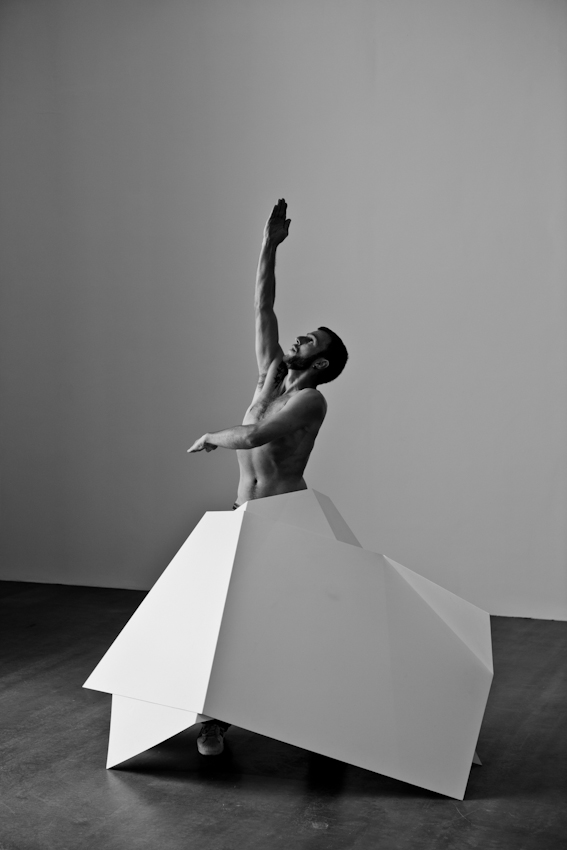
Metallica
Robert typically uses photographic portraiture as a starting point for his works on paper, gently breaking down divisions between two and three dimensions, image and object. In some cases Robert uses found photographs that he tears, collages, tapes, and crumples before digitally scanning them and pinning them to the wall […] Extending into the space of the gallery, these works create a relationship to the viewer’s body while underscoring a sense of impermanence.

Tape sculptures

Latent Figure Protocol
Latent Figure Protocol takes the form of a media installation that uses DNA samples to create emergent representational images. The installation includes a live science experiment, the result of which is videotaped and repeated for the duration of the gallery exhibit. Employing a reactive gel and electrical current, Latent Figure Protocol produces images that relate directly to the DNA samples used. The above images were re-produced live. Each performance lasts approximately one hour, during which time audience members see the image slowly emerge. In the first experiment, a copyright symbol is derived from the DNA of an industrially-produced organism (a plasmid called “pET-11a”), illuminating ethical questions around the changing status of organic life and the ownership of living organisms. Future instances of the LFP will use the DNA of other subjects and create other images.
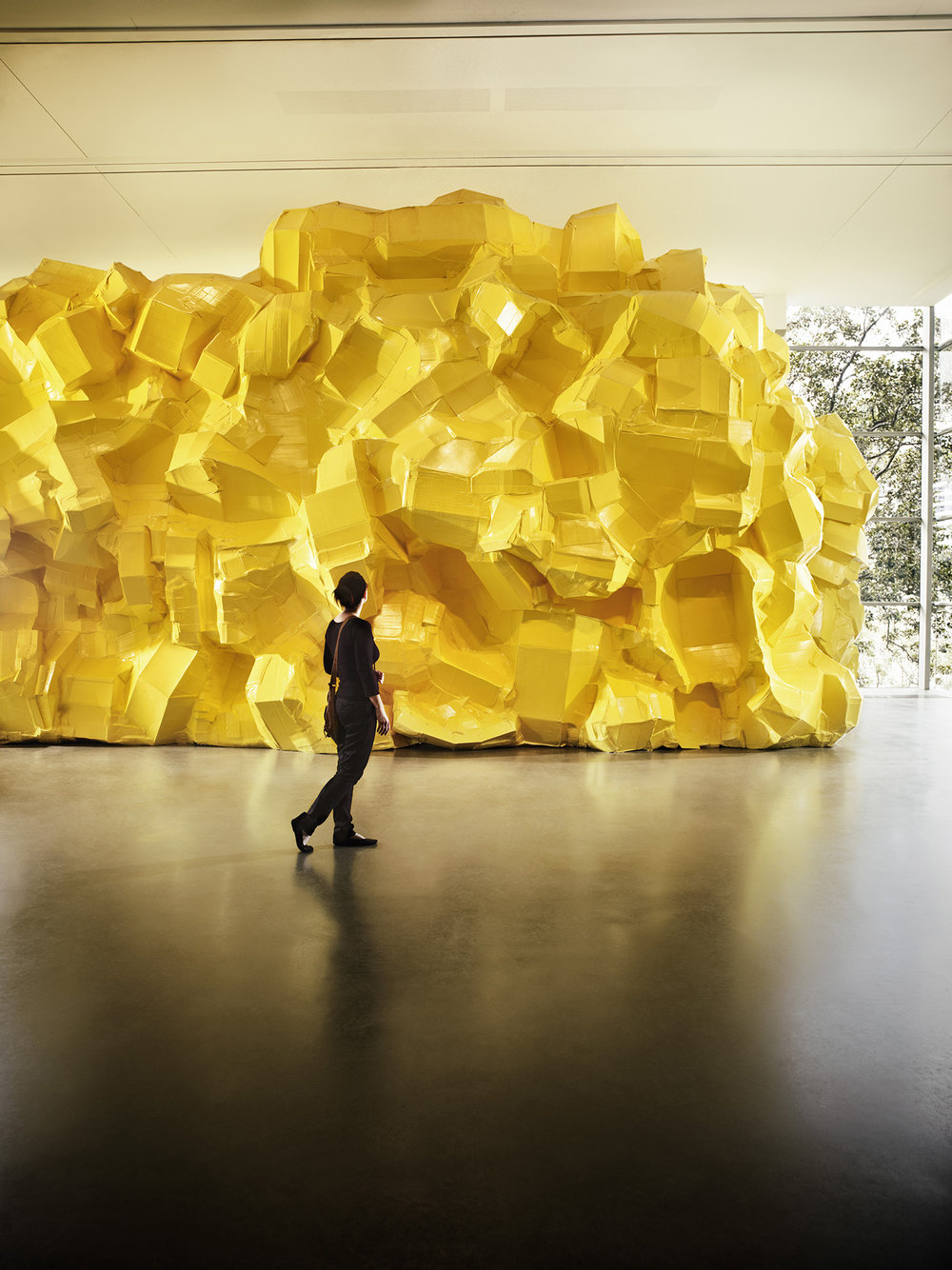
Yellow Structure
site-specific installation Yellow Structure (2016) by Richard Maloy. Seen from a distance, Yellow Structure will appear to be a solid, golden, rock-like structure that is minimal in nature. Closer inspection by visitors, however, will reveal its degradable and humble construction from common industrial materials such as cardboard, paint and tape.

Solitudes duo
Solitudes duo est la prolongation de Solitudes solo, sa plus récente création, couronnée par le Prix de la meilleure œuvre chorégraphique 2012-2013 par le Conseil des arts et des lettres au Québec. Mettant un terme à la nudité, Daniel Léveillé offrait alors à ses danseurs des solos épurés, débarrassés de toute projection affective, mais empreints d’une douceur inattendue. Cette nouvelle étape questionne la nature des relations encore possibles dans un monde où l’omniprésence de la technologie isole toujours davantage. Les couples de la pièce exposent dans toute leur complexité les états mouvants de l’amour et de la relation à l’autre.

WORKS ON PAPER III: The Shape of Missing Violence
Each of the participants is required to hold a knife and stay still. They stand in front of a wall within a “frame” which is made of black adhesive tape in rectangle shape. When the performance starts, the artist adjusts their postures and, later, uses the same black adhesive tape to “fill” everything within the frame. Afterwards, the wall and the bodies of the participants are covered with black tapes, while their heads and the knives are still visible; then, their heads are covered with black tape and, finally, the knives are covered as well. Once participants realize that their body is completely covered, they can move slightly, expanding the tapes from “inside” (not destroying them) and come out from the tapes. They leave the knife, which is stuck on the wall, behind the tapes. In the end, the shapes of the leaving traces of their bodies are shown while the knives are invisible.
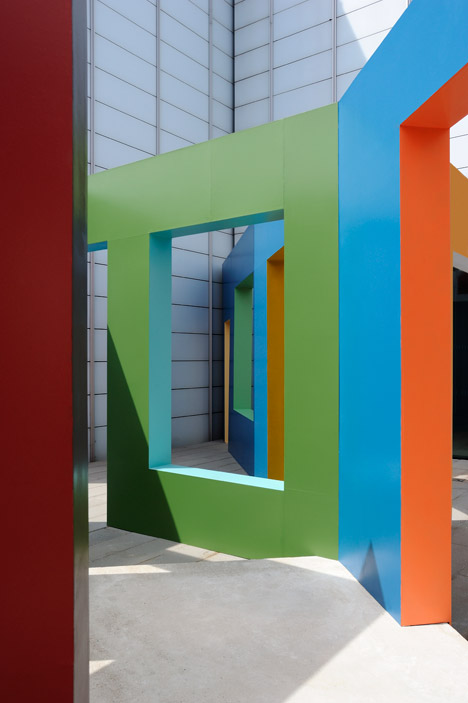
Bekannt für seine architektonische Skulptur, umfasste die Ausstellung „In Here, For This“ Möbel wie Skulpturen und eine grafische Innenausstattung. Die Arbeit ist als manipulierte Form von funktionalen Möbelstücken konzipiert, die fünf architektonische Elemente wie einen Tisch, eine Bank oder ein Bücherregal umfassen. Diese Einheiten sind zu stapeln, auf jeder Seite zu drehen und zu trennen oder miteinander zu verbinden. Es wird darauf geachtet, Farben zu formen und zu blockieren, damit die Schönheit der Form sprechen kann, während die formalen Qualitäten von Kunst und Architektur berücksichtigt werden. Negativer Raum und positive Form werden so interessant und dominant wie einander.

anamorphic projection
Artist Stephen Doyle of Doyle Partners (of paper sculpture fame) just completed this excellent anamorphic projection for the New York Times magazine using blue tape. The project involved taping the various words of traits being taught at KIPP Infinity middle school in Manhattan, of which “grit” is one. The photo is great and I also enjoyed the making-of video showing just how it’s done.
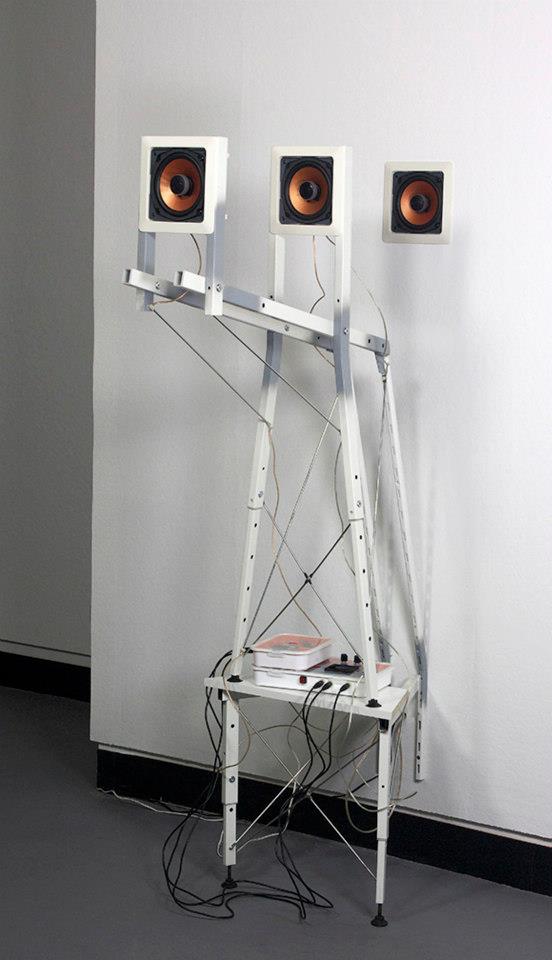
Construction N
Often occupying both physical and temporal space, my sculpture has always incorporated both conventional and experimental media, including woodcarving, metalworking, installation, kinetics, microelectronics and video. While it tends to be visually diverse, the friction between object and memory has been at the conceptual core of my sculptural practice since 1994. The images, objects and narratives of a particular place or experience undergo distortions each time they are represented, and it is these forms of abstraction I explore in my sculpture.
Earlier bodies of work have utilized the physical residue of my traveling – the souvenirs, postcards, snapshots and videotapes – as central elements of the sculpture, forcing them to reveal their own inadequacy, disengagement or transformation, to subvert the nostalgic ideal, or to disrupt the usual implications of value and validation in a cultural artifact. In later works I utilize the physicality of scale, motion, and orientation to extend and challenge the conventional representation of landscape. These pieces define specific places as indefinite spatial constructs that complicate the certainty of “being there,” and are part of a larger attempt to relate a fragmented travel narrative through architecture, landscapes and souvenirs.
I have been using IKEA products as raw material for several years, and continue to be interested in extracting conceptual value from it. I am currently exploring the relationship between the Modern avant-garde and contemporary consumer design culture. In my recent work, I attempt to articulate various points of connection and rupture between IKEA and the Bauhaus by constructing scale models of demolished or unrealized buildings by Bauhaus founder Walter Gropius using “hacked” IKEA products such as tables, bookshelves and flooring.
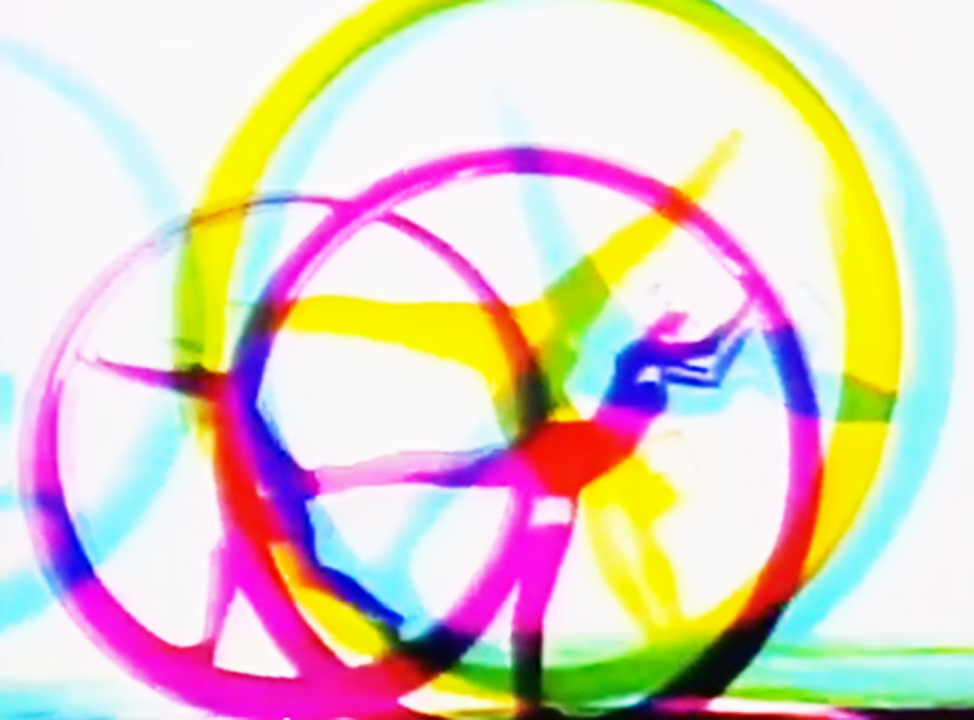
Circles II
Doris Chase has achieved international stature as a pioneer in the field of video art since she moved from Seattle to New York City in 1972. An artist of remarkable and continuous creativity, Chase now divides her time between her video headquarters in New York and a Seattle studio where she works on new projects in painting and sculpture.Beginning as an innovative painter and sculptor in Seattle in the 1950s, Chase created sculpture that was meant to be touched and manipulated by the viewer. Chase then developed large-scale kinetic sculptures in collaboration with choreographers, and her art was set in motion by dancers. In New York, her majors contribution to the evolution of artists’ video has been her work in videodance. On videotape, dancers and sculpture evolve into luminous abstract forms which represent some of the most sophisticated employments of video technology by an artist of the 1970s. In the 1980s, Chase began working in the nascent genre of video theater. In these productions, she uses the imtimacy of the video screen to achieve a new synthesis of visual and dramatic art. Her video theatre compositions present multicultural and social commentary, utilizing scripts by writers such as Lee Breuer, Thulani Davis, and Jessica Hagedorn in the “Concepts” series. Collaborating with actresses Geralding Page, Ann Jackson, Roberta Wallach, Joan Plowright, and Luise Riner in the “By Herself” series, she focuses on the viewpoints and experiences of older women. Today, coming full circle, Doris Chase in Seattle is exploring a renewed interest in painting and sculpture as well as in the modernist aesthetic she never really ceased pursuing, even during her most adventuresome multimedia years.
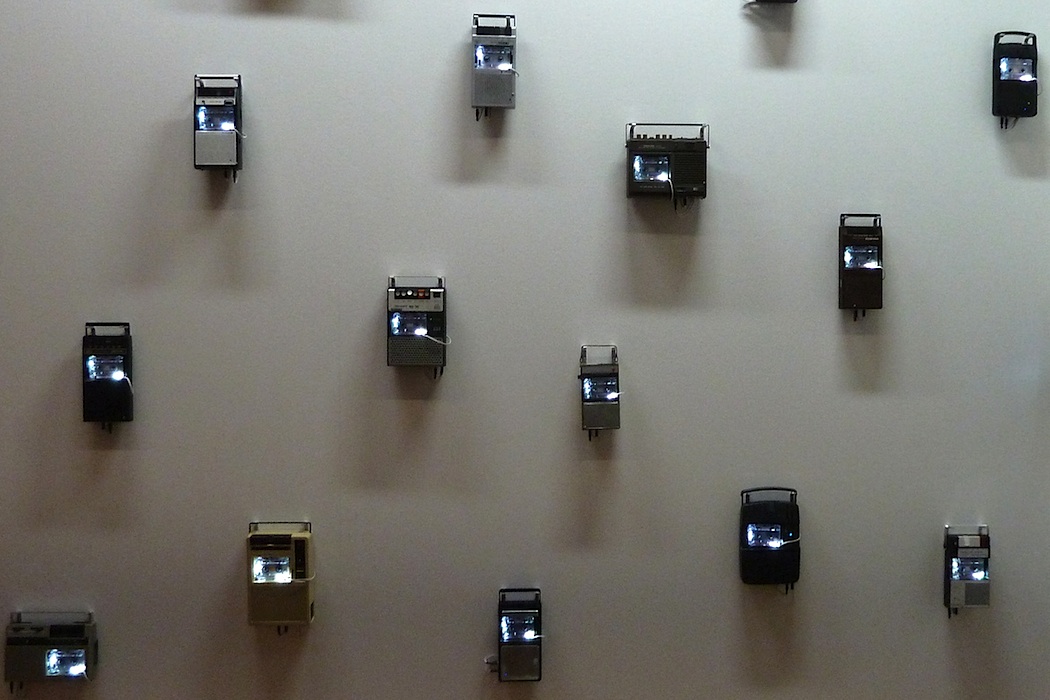
Binatone Galaxy
An installation for used cassette players which looks on their obsolescence not as an ending, but as an opportunity to reconsider their functional potential. Superseded as playback devices, they become instruments in their own right. Replacing the prerecorded content of each tape with a microphone gives us the chance to listen instead to the rhythmic and resonant properties of these once ubiquitous plastic shells. Binatone Galaxy brings the framework within which a generation purchased their favourite records to the centre of attention, revealing the acoustics of the cassette and the voices of the machines themselves.“On the walls of a white room, brightly illuminated with natural light, Stephen Cornford, and artist who describes his work as existing “at the intersection of sculpture and music”, has mounted some 30 old cassette recorders. Models from Boots, Sanyo, Robotic, one lone and gorgeously named Binatone Galaxy: they all hang on the walls, wired up, tapes loaded and ready for action. Smitten by an attack of technological melancholia, the visitor can wonder who owned these things, what pop charts did these machines once record? Were they ever placed next to pillows, late at night for surreptitious listening pleasures? What happened to the voices that once rubbed the magnetic heads of these little machines? For some artists, the speed (and resulting impact) of obsolescence on the technology we once took for granted has spawned a form of fetishism, in which the voices – the human agency – they once recorded exist in an alternate, ghostly dimension, a reminder of what once was. This is not Cornford’s theme. The fact that each audio cassette in his machines is fitted with a motion sensor and a contact mic, so that, on entry the machines whirr into action, indicates that Binatone Galaxy is very much of the here and now. Yes, Cornford has chosen old, cheap and accessible technology with which to realise this, but I suspect that he is aiming for a furrruuuzzy audio intimacy.

Крис Энгман
Inverse Negative
Da steht eine Holzkonstruktion in der Wüste, die für sich allein belanglos, völlig uninteressant wäre. Erst der nach dem Sonnenstand kalkulierte Schattenwurf ergibt die Kontur eines Diarahmens, aus dem das Dia herausgefallen ist, das wiederum als zweiter Schatten im Sand liegt. Daliesk geradezu die in einigem Abstand platzierte Stehleiter. “Inverse Negative” ist das 2010 entstandene Foto betitelt. In einer Vorher-Nachher-Situation zeigt “Senescence” von 2010 Bauholz vor und nach der Bearbeitung, aufgestapelt, zusammengeschnürt.
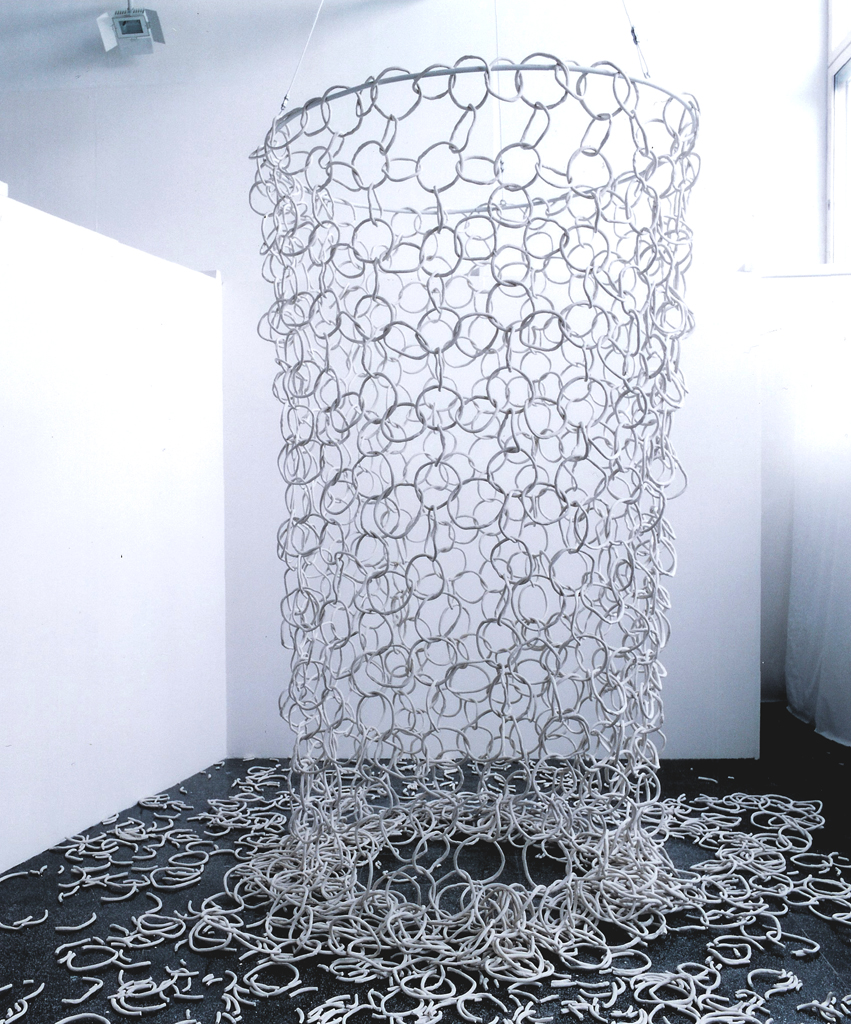
Selfdestructing Porcelain Net
Installation de deux sculptures en mouvement. Le grand filet est fait à la main en porcelaine enroulée. Le plus petit est en faïence enroulée. Le processus de fabrication des filets est très compliqué. Il est réalisé en une seule pièce en plusieurs étapes dans le four.
Je voulais faire des sculptures où le son de l’argile était utilisé dans l’installation. J’aime aussi l’idée de faire des sculptures difficiles et chronophages à réaliser, c’est-à-dire se briser en morceaux. Comme la vie.
.
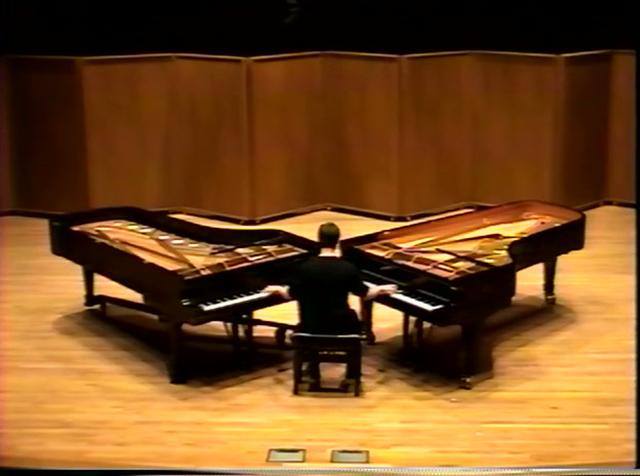
steven reich
Piano Phase
Not having two pianos at his disposal, Reich experimented by first recording a piano part on tape, and then trying to play mostly in sync with the recording, albeit with slight shifts, or phases, with occasional re-alignments of the twelve successive notes against each other. Reich found the experience satisfying, showing that a musician can phase with concentration.
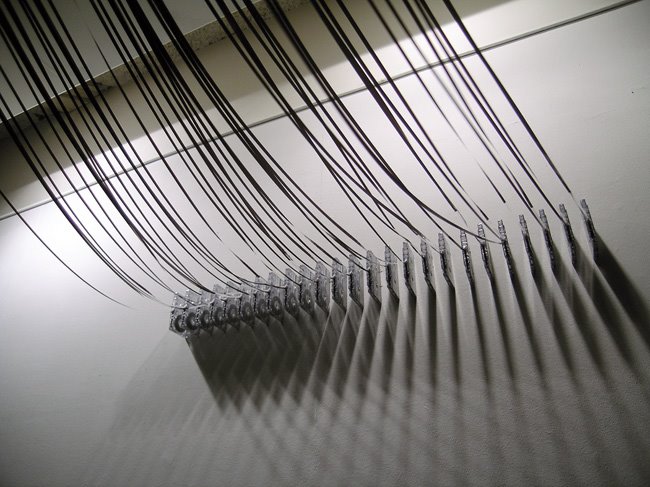
Tape Wall
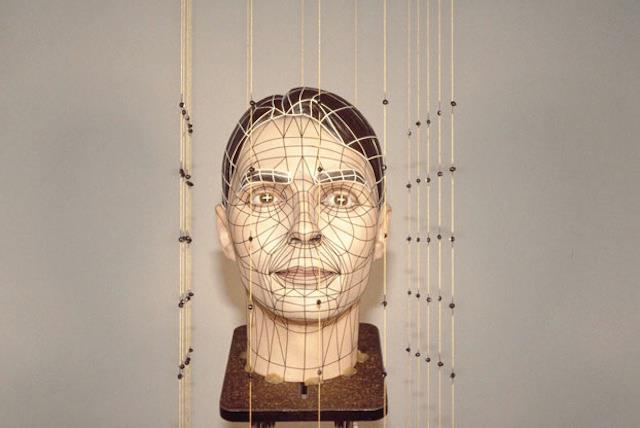

cassette tape constructed entirely from LEGO

tapeart


Астрид Крог
light tapestry
“En tant que pionnière dans le domaine d’un nouveau genre de tapisseries infusée de lumière, l’impact du travail d’Astrid Krogh sur les arts, l’architecture et le design est considérable. Alors que jusque là les tapisseries étaient considérées comme de simples ajouts décoratifs à nos intérieurs, Krogh a montré comment la technologie textile pouvait en faire des éléments architecturaux. En intégrant le textile dans l’architecture, Krogh a ouvert la voie à des formes fluides et au design qui favorisent les relations dynamqiues entre le spectateur et l’objet. Par le passé la relation tactile à l’objet textile ne passait que par le sens du toucher, dans le travail de Krogh cette relation est mesurée par l’œil et ressenti de tous nos sens.» Bradley Quinn

Marian Zazeela & The Theatre of Eternal Music
Dream House
The album was released with the catalog number Shandar 83.510. Regarding the extended run time, Young in the sleeve notes says that “Time is so important to the experiencing and understanding of the music in the record that every effort was made to make the record last as much as the original master tapes”; Young thanked Mr. Michel Blancvillain who made it technically possible.The cover, labels, design and calligraphy were designed by Marian Zazeela, and are drawn in her trademark magenta on a black background, featuring a picture of her and Young in performance. The two inner sides of the record jacket contain a comment by Shandar founder Daniel Caux, plus extensive original notes penned by La Monte Young himself about the music, its structure and its history. In 2016 Aguirre Records reissued the album on vinyl in a limited-edition, remastered form